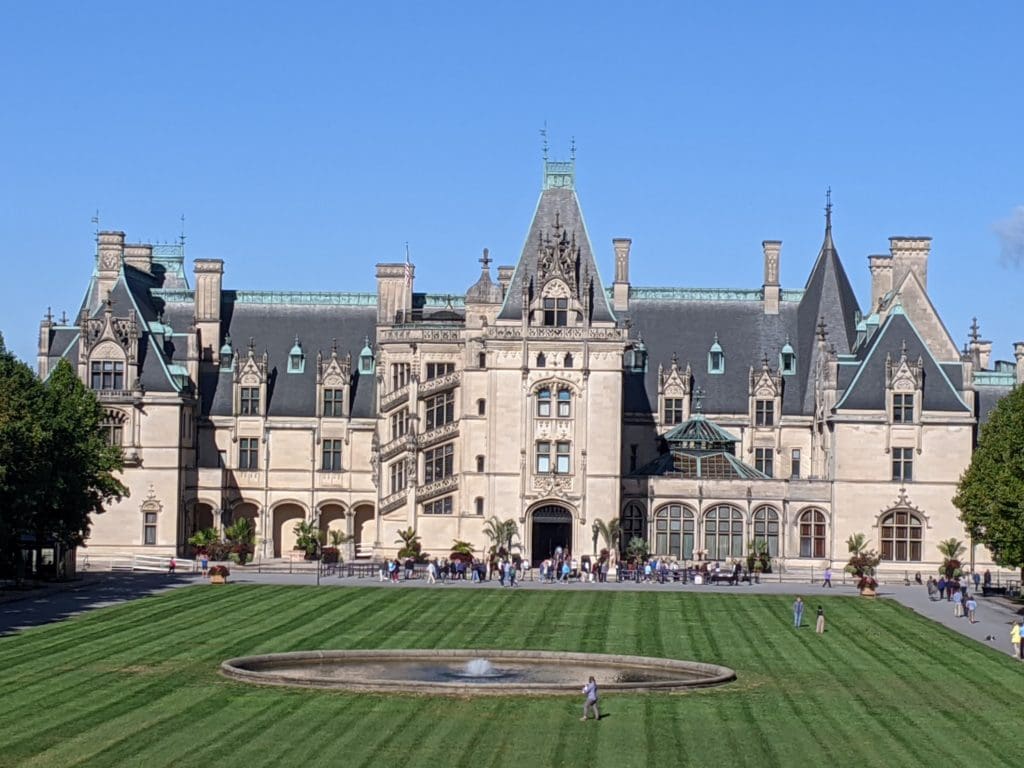
After months of postponed trips and canceled events due to the ‘great 2020 pandemic,’ I was feeling some cabin fever and desperately needed to get out of my house. I decided I needed to visit a much larger house – one where you couldn’t possibly feel couped up. My choice? The Biltmore Estate, the colossal creation of George Vanderbilt’s fortune, is located in Asheville, North Carolina.
The Biltmore Estate is an iconic architectural marvel filled with beautiful art and treasures, that gives us a glimpse into the rarified world of the Gilded Age wealthy and privileged. Guests who got an invitation to visit surely enjoyed the fine dining, the luxurious accommodations, and whiling away time strolling the impeccable gardens.
Biltmore Estate History
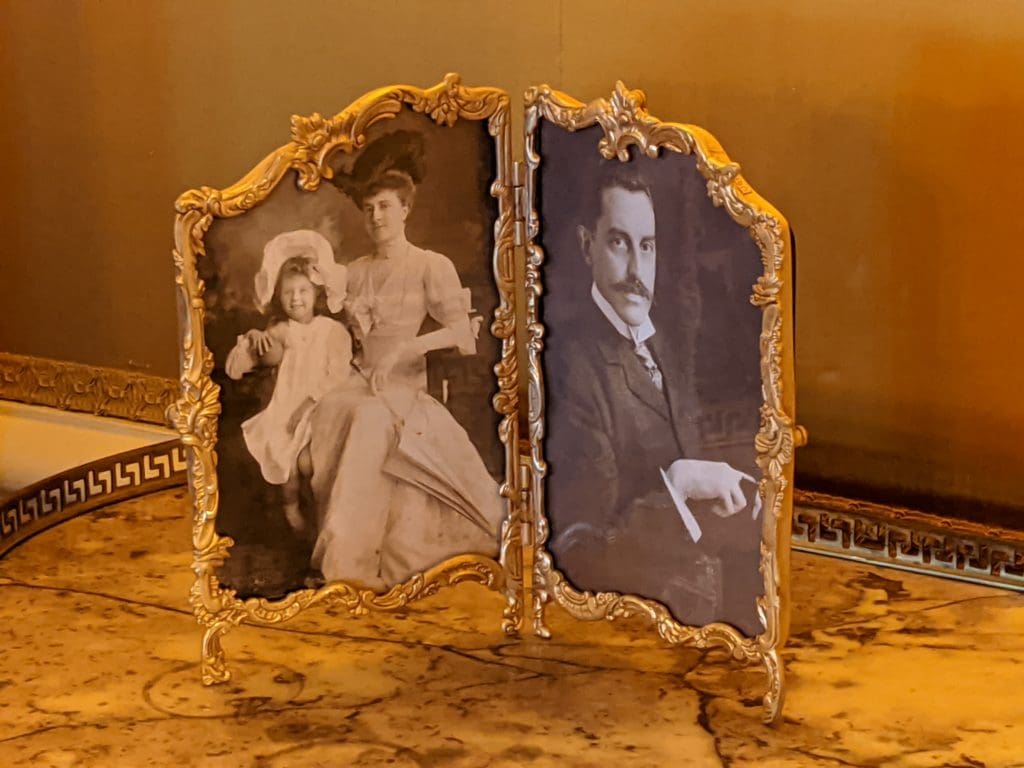
In the late 19th-century, George Vanderbilt frequently visited the Blue Ridge Mountains and fell in love with the area. He began buying 125,000 acres of rundown farmland and began construction of his summer house in 1889. The 250-room French Renaissance chateau took six years to complete under the direction and design of architect Richard Morris Hunt.
Vanderbilt opened the Biltmore House on Christmas Eve, 1895 as a retreat for friends and family to escape city life. George wed Edith Stuyvesant Dresser in Paris in June of 1898 and after a four-month honeymoon in Europe, the new Mrs. Vanderbilt arrived ‘home’ as the lady of the estate.
Much of the land had been clear-cut and over-farmed so Vanderbilt contracted the venerated ‘Father of Landscape Architecture,’ Frederick Law Olmstead, and charged him with revitalizing and redesigning the massive grounds. Records indicate that over six million plants were bought, propagated, and planted for the grounds, gardens, and conservatory plus several million seedlings used in reforesting the mountains. Today, the estate maintains 8,000 acres; Edith donated 80,000 acres to create the Pisgah National Forest.
George Vanderbilt died at the age of 51 in 1914, leaving the estate to Edith and their 13-year-old daughter, Cornelia. Ten years later, Cornelia married the Honorable John Francis Amherst Cecil and they lived and entertained at the estate. During the Great Depression, the Cecils opened Biltmore to the public to help the area’s tourism. Today, the estate is still privately held and run by Vanderbilt’s descendants.
Touring the Biltmore House
The magnificent Vanderbilt home is the largest private residence in America. It covers an astonishing 175,000 square feet – that’s about four acres – and has 33 bedrooms, 65 fireplaces, and 43 bathrooms.
A self-guided tour takes you through three of the four floors and the basement. Travel Maestro tip: Even though docents stationed in every room can answer any question about Biltmore, do purchase the ticket that includes the audio guide for complete background and interesting features of each room.
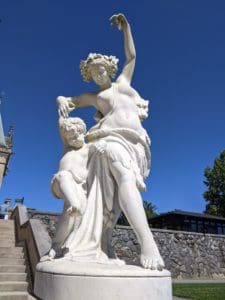
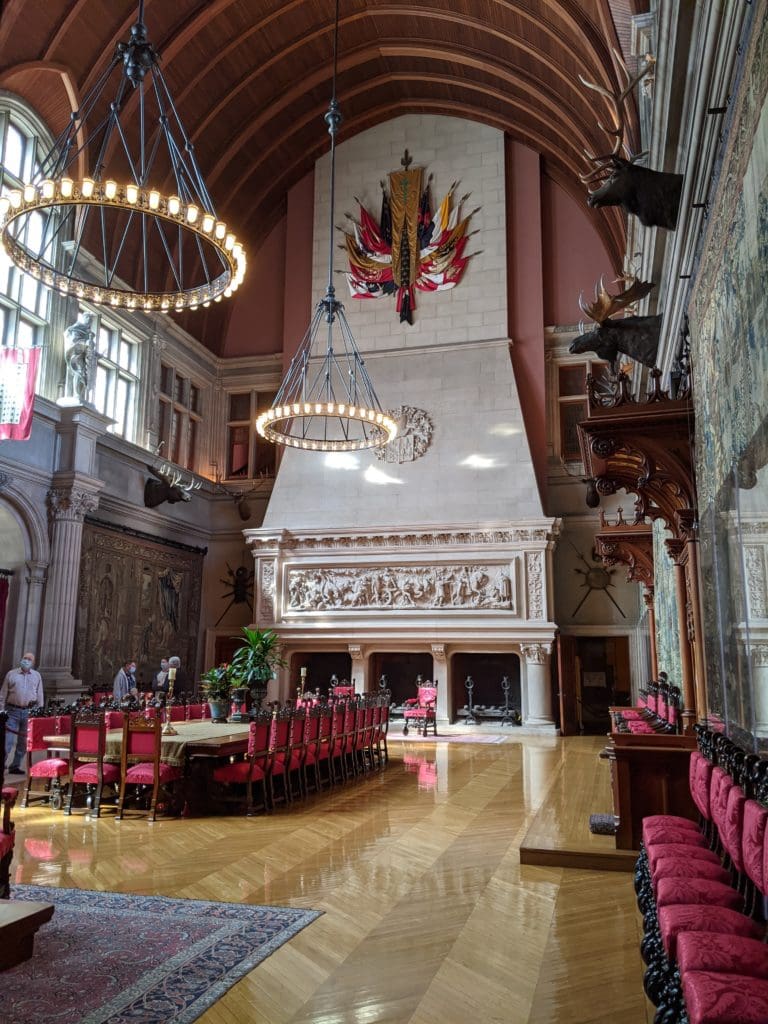
The seven-story high Banquet Hall and its enormous table that seats a mere 38 guests is beyond impressive. The gargantuan scale continues with the massive triple fireplace at one end and the 1916 Skinner pipe organ in the loft at the other end. Travel Maestro tip: One can only imagine the sight of a candlelit table laden with formal place settings and huge flower arrangements, as the Vanderbilts wined and dined fashionable Gilded Age titans.
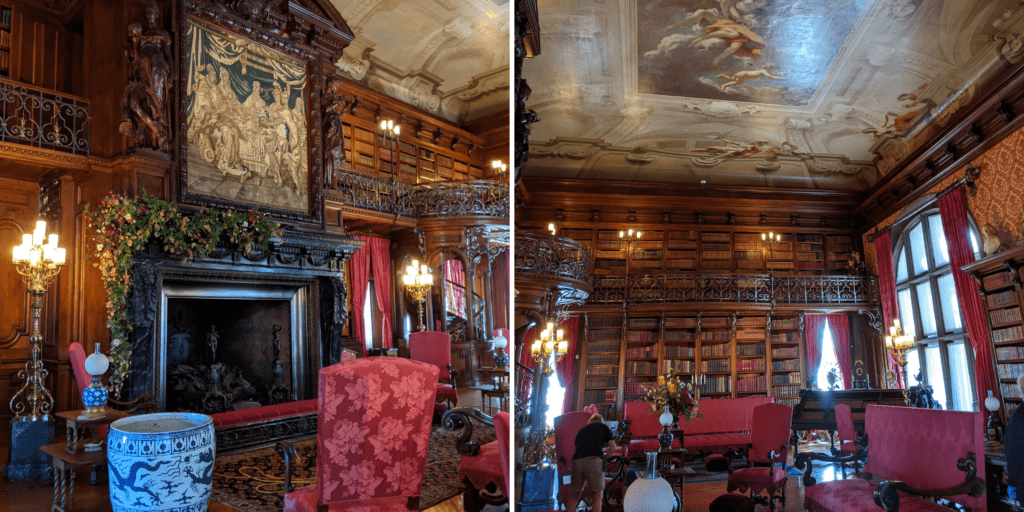
The two-story library holds about half of George Vanderbilt’s collection of 24,000 volumes. The 18th-century ceiling painting by Pelligrini once graced a palace in Venice, Italy and there is quick access on the second level above the fireplace for guests staying on the second floor. Travel Maestro tip: Despite the size of the room, I could easily see myself curling up to read by the huge fireplace.
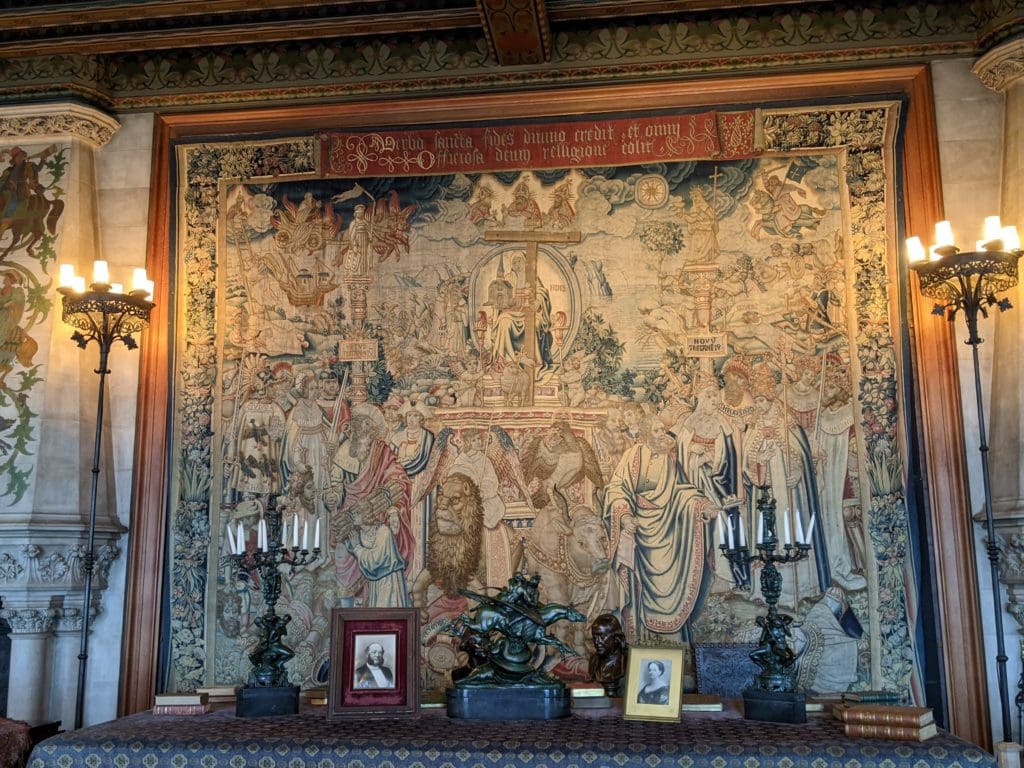
The first floor holds many other gathering places, including a charming Winter Garden with a glass roof and fountain sculpture, the 90-foot long Tapestry Gallery where guests enjoyed tea and music amid invaluable 16th-century Flemish tapestries, and the Billiard Room where evening refreshments were served.
The second floor houses a private suite where George and Edith had separate bedroom retreats, his with gold-leaf wall covering and hers with the finest silk coverings, both with exquisite furnishings. The Oak Sitting Room connecting the bedrooms is where they could share breakfast and Edith planned the day with her head housekeeper. From these rooms, the couple had majestic views out over the mountains and the grand estate.
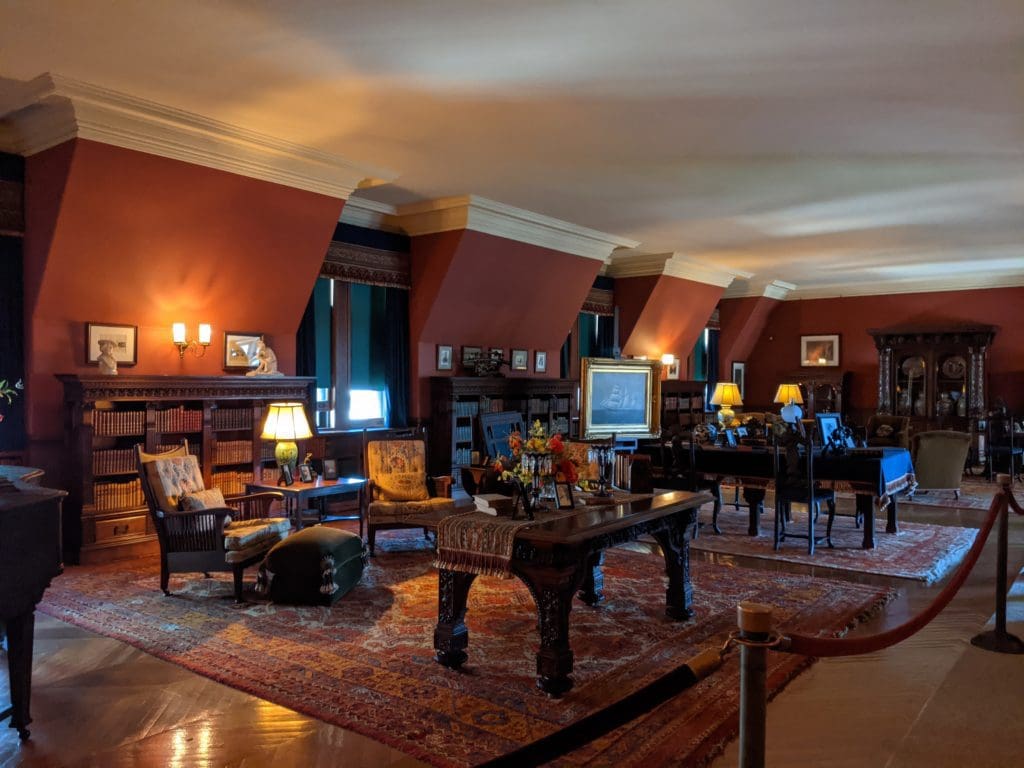
Guest bedrooms and connecting suites spread throughout the second and third floors. Guest rooms bear the names of notable guests or the artist whose work decorates the room. Each bedroom had a private bathroom, quite a luxury in a time where not every home had a single indoor bathroom. Each floor also had a large Living Hall where family and guests could gather before meals, read, or converse with one another. Travel Maestro tip: Guests at the Biltmore were some of the most important and well-traveled people of the day, so socializing was not only stimulating but could lead to appealing opportunities.
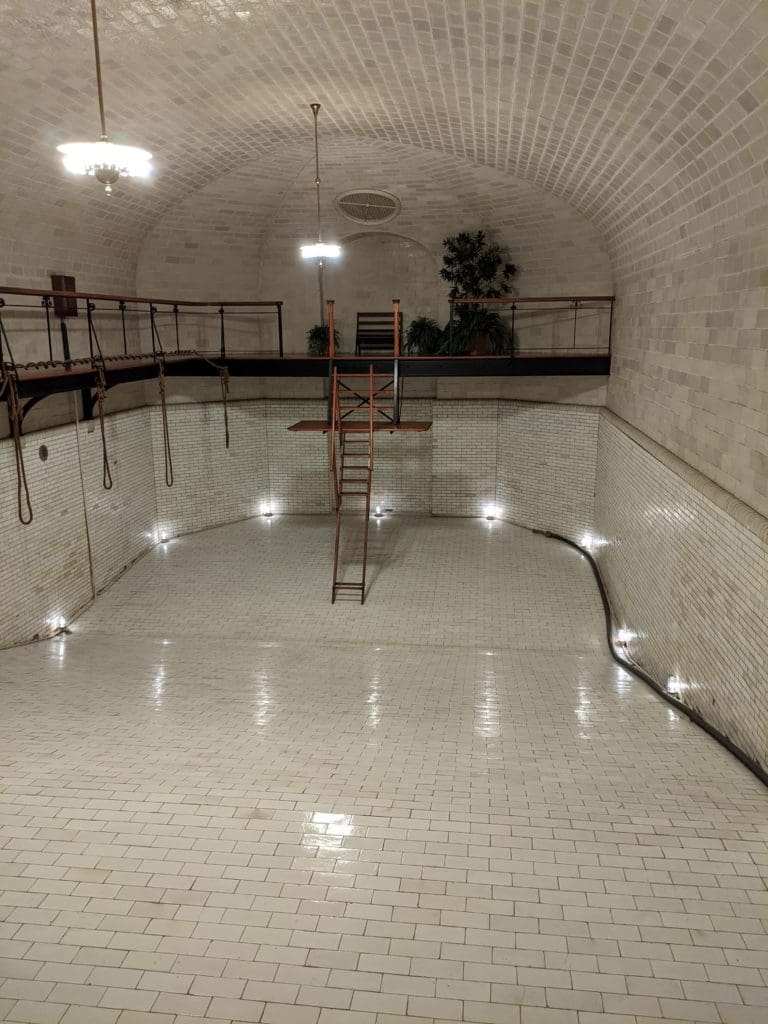
At the foot of the Grand Staircase, there is an unassuming entrance to the basement. On one side, there is a bowling alley (a servant retrieved the balls and reset pins), a state-of-the-art gymnasium to keep fit, and a 70,000-gallon heated swimming pool with underwater lighting. There is also a row of dressing rooms for ladies, and a separate row for men because it would have been unseemly to walk through the house in a bathing costume. Travel Maestro tip: The last time the pool was filled, the water all leaked out overnight, so sadly, the pool is permanently out of commission.
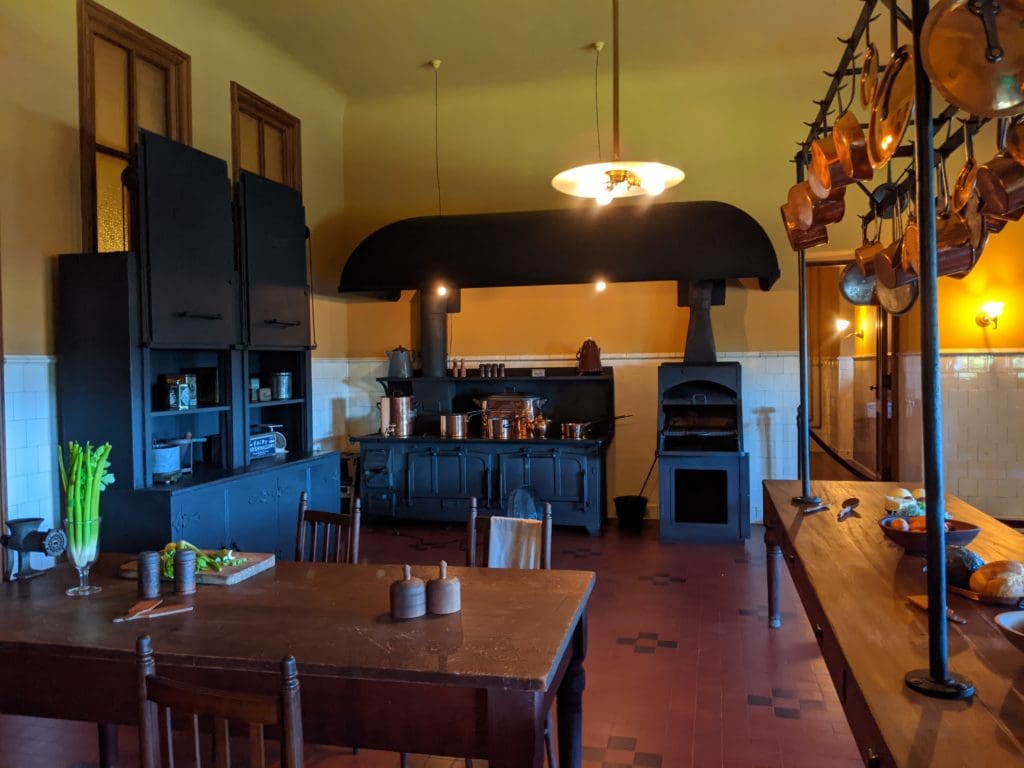
The other side of the basement contains three kitchens, many larders and pantries, the staff dining room, and kitchen staff bedrooms. Other staff bedrooms were located on the fourth floor.
Just outside the house, the original Stables now contain shops and the Stable Café. Travel Maestro tip: This is a good place to sample the famous Biltmore ice cream before you start walking the grounds.
Currently, tickets for the Biltmore House are limited capacity and require advance reservations. Face coverings are required for guests over 2 years, and social distancing is monitored. Travel Maestro tip: Plan to spend up to two hours for the self-guided house tour.
Exploring the Estate Grounds
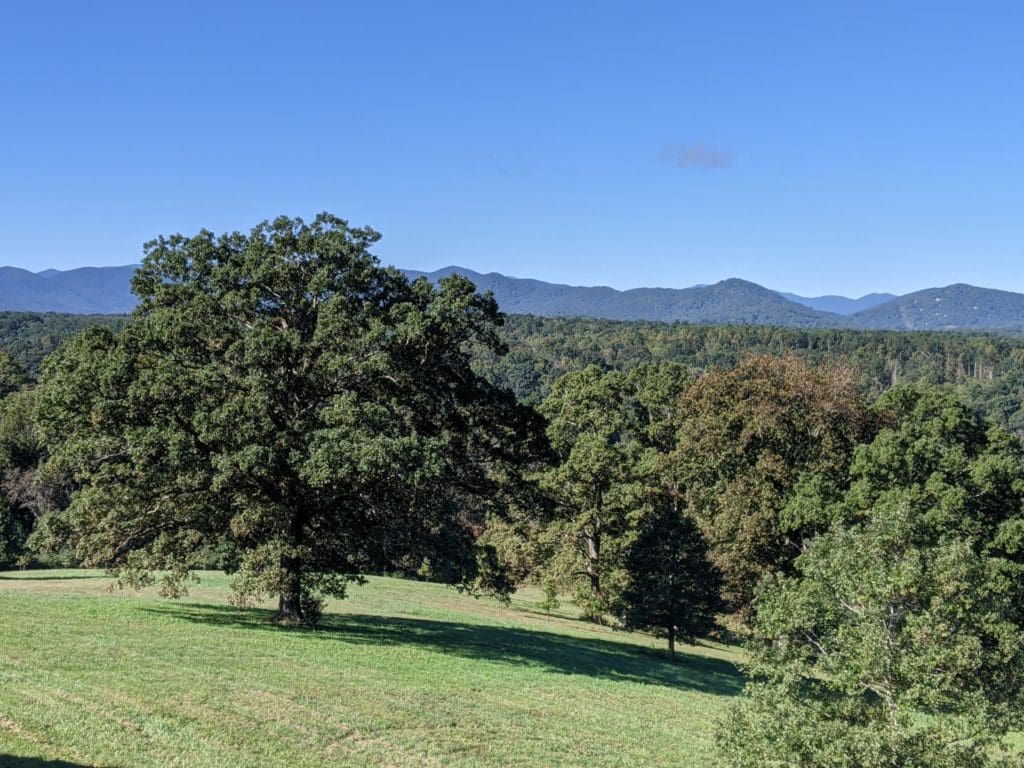
The sprawling home may be the crowning jewel of the estate, but the gardens and grounds showcase the genius of Frederick Law Olmstead. You arrive through a 3-mile arboretum that winds from the French Broad River to the house. Travel Maestro tip: The speed limit is very low, but don’t be in a hurry. It’s worth the time to slow down and admire the naturalistic design.
More than 30 acres of carefully designed formal and informal gardens are close to the house flowing downhill along the natural contours of the land. Visit the Italian Garden with statuary and reflecting pools filled with lily pads and koi. A path leads from there through the Shrub Garden filled with ornamental shrubs and trees. Next, you come to the Walled Garden that features a riot of seasonal color in spring, summer, and autumn laid out in pleasing symmetry. The Rose Garden showcases 50 varieties and structures such as a maypole popular in the late 1800s.
At the foot of the Walled Garden is the Conservatory, also designed by architect Richard Morris Hunt. It houses a large collection of orchids, palms, and other tropicals. Below is A Gardener’s Place where you can purchase all kinds of wonderful garden art and tools. Travel Maestro tip: You can drive to the shop and it has a small parking area.
Beyond the Conservatory, a 15-acre Azalea Garden with a network of walking trails blooms with a million blossoms in late April and May. Finally, scenic walking paths circle the Bass Pond with a picturesque wooden bridge and a boathouse. Travel Maestro tip: To learn more about Olmstead’s landscape design, purchase the popular 90-minute Legacy of the Land Tour add-on ticket.
Antler Village
Antler Village is about two miles from the Biltmore House on the main estate road. All attractions there are included on your Biltmore admission and there are some special tours available for an additional fee.
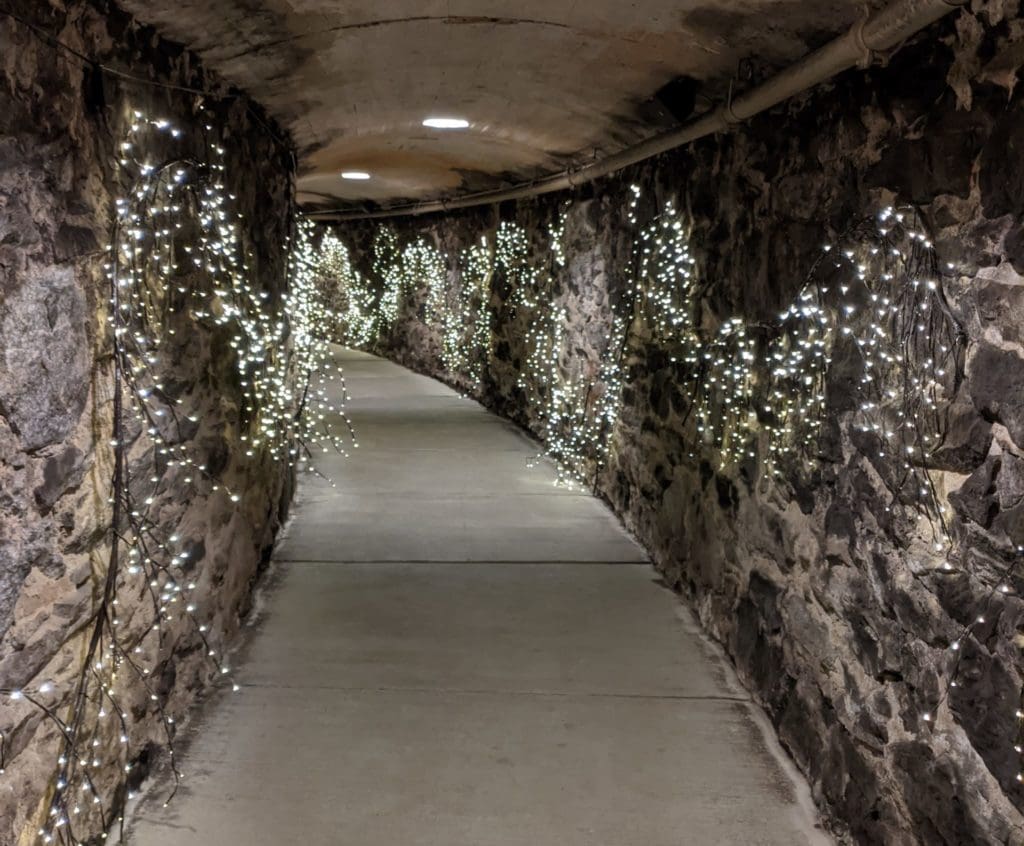
The most popular place to visit in Antler Village is the Biltmore Winery. I was surprised to find out it is the nation’s most-visited winery. You enter through a dramatic underground tunnel originally used for the Biltmore Dairy. Your Biltmore admission ticket includes a free wine tasting (reservations required).
You can see historic farm equipment and blacksmithing demonstrations, as well as a temporary exhibit that tells even more about the Biltmore history and legacy. Several eateries, including Cedric’s Tavern, named after George’s favorite St. Bernard, and the Creamery, where you can get more of that delicious Biltmore ice cream, are great for sustenance after a full day exploring Biltmore Estate.
Two hotels, the Inn on Biltmore Estate, and the more casual Village Hotel are in Antler Village. Staying right on the Biltmore Estate gives you access to explore the gorgeous grounds. There are plenty of walking and biking trails to enjoy and a bike rental station that will get you outfitted.
Exploring the Biltmore Estate is a cornerstone of any visit to Asheville and a must-do. Every season has its draw, but during the holiday season, the Biltmore is especially decked out. To plan your visit to Biltmore, contact your Covington vacation advisor.






Leave a Reply